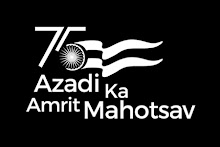







History was created in the UP elections with over 59.16% of the state’s 12.54 crore electorate voting in the monthlong seven-phase polls that ended on Saturday. This was the highest polling percentage in the state after Independence. Also, for the first time, the turnout of women was higher than men and urban areas recorded an impressive increase in the polling percentage. Saturday’s election in 10 districts recorded 62.04% polling, which was the highest among the seven phases. In the first phase, the polling percentage was 60.10%, in the second it was 55.60%, the third recorded 57.22%, the fourth 58.38%, the fifth 60.47%, and it was 62% in the sixth phase. The previous highest polling record — of 57.15% — was set in the 1993 assembly polls when the BSP and the SP fought together on a common platform against the BJP, which was riding on the communal wave created by the Ram temple movement. The highest turnout in parliamentary elections was 56.44% in 1977, after Emergency, when there was a strong anti-incumbency wave against Indira Gandhi. Youth and women led the voter surge this time. But the Election Commission also played a significant role, reducing the number of anomalies in the voters’ list. The decision to hold polls in February and early March paid off with the pleasant weather making it conducive for voters. But — as exit polls also clearly indicated — there was a strong anti-incumbency factor against chief minister Mayawati, which might have contributed significantly to the high voter turnout. Among the districts which went to polls on Saturday, Jyotiba Phule Nagar recorded the highest turnout at 67.25%, followed by Pilibhit at 65.88%, Kheri at 62.73%, Bijnor at 62%, Moradabad at 61.83%, Bareilly and Shahjahanpur at 61.33% each, Bhimnagar at 61%, Rampur at 60.4% and Budaun at 59.17%. Of the 60 constituencies in the 10 districts, Hasanpur in Jyotiba Phule Nagar recorded highest polling at 72% while Bareilly Cantonment recorded the lowest at 54%. Of the 75 districts, this time, 37 recorded more than 60% polling. In actual numbers, this time, 7.53 crore voters of a total 12.73 cr exercised their franchise. For the first time, polls were violence free.
Goa witnessed its highest voter turnout since liberation registering 82% polling that was largely peaceful. The record turnout betters the 2007 figures of 70.51% voting. Voters on Saturday sealed the fate of 215 candidates for the 40-member Goa House. Opposition leaders attributed the high turnout to anti-incumbency. Polling began briskly in the morning and the pace continued throughout the day. Elderly citizens and the young were enthusiastic exercising their franchise. As per provisional figures, Sanquelim seat recorded the highest of 88.51% and Velim the lowest of 73.49%, joint CEO N Navti said. He added that the conduct of the elections was smooth. All contesting parties claimed victory for themselves in view of the high voter turnout. The poll monitoring system introduced for the first time in an Assembly election eliminated bogus voting, election officials claimed. The poll monitoring system was first experimented with in a byelection for the Valpoi constituency in 2010. The Panaji Municipal elections also successfully used it in 2011.




No comments:
Post a Comment